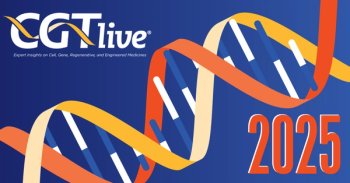
New Findings May Help Bolster CRISPR/Cas9 Accuracy
David Taylor, PhD, an assistant professor in the department of molecular biosciences at UT Austin, discussed the Cas9 research conducted between 2 labs at UT Austin.
Researchers at The University of Texas Austin have identified regions in Cas9 that allow mismatches in DNA binding which interferes with on-target activation of the enzyme in CRISPR/Cas9 editing, according to a recent paper published in Nature. Chief among these regions is a structural loop in the RuvC domain that may reduce off-target DNA cleavage while maintaining rapid on-target cleavage. The research may inform the design of future
The investigators include senior authors David Taylor, PhD, assistant professor, department of molecular biosciences, UT Austin, and Kenneth Johnson, PhD, professor, biochemistry, and member, Institute for Cell and Molecular Biology, who researched the topic in collaboration across their labs. The research was spearheaded by first authors Jack P. K. Bravo, PhD, postdoctoral researcher, UT Austin, and Mu-Sen Liu, PhD, scientist, lead discovery, Rheos Biology, formerly a postdoctoral researcher at UT Austin.
The investigators used kinetics-guided cryoelectron microscopy to determine the structure of Cas9 at different stages of mismatch cleavage and identified a linear structure of DNA in a mismatched Cas9-DNA conformation as opposed to the kinked structure in on-target conformations, as well as the loop structure that allows for common mismatch tolerance near it, at the end distal to the protospacer adjacent motif.
READ MORE:
“The loop is normally disordered in structures where you have a perfect match, so we don't think it's needed for a perfect match. But when it's recognizing this interesting mismatch, it inserts in and it stabilizes it,” Taylor told CGTLive. “So, it's telling Cas9, this is a good spot for you and you should cleave here, which we wouldn't think it would do. It makes sense in terms of what maybe a bacteria would want to do, but it definitely is not what we would want to do in gene editing technologies.”
After analyzing the structure and kinetics of the loop, the researchers attempted to mutate the stabilizing regions in the loop to reduce mismatch tolerance. Their initial efforts show promise, with on-target cleavage at a similar rate to wild-type Cas9m but off-target cleavage of the 18–20 position mismatch DNA 500-fold slower. This work serves as proof-of-concept for the design of future, next-generation, high-fidelity CRISPR/Cas9 technologies.
CGTLive spoke with Taylor to learn more about the research between the 2 labs and the possible implications of their findings. Watch the first part of the interview below:
REFERENCE
Bravo, JPK, Liu, MS, Hibshman, GN, et al. Structural basis for mismatch surveillance by CRISPR–Cas9. Nature. Published online March 2, 2022. doi:10.1038/s41586-022-04470-1
Newsletter
Stay at the forefront of cutting-edge science with CGT—your direct line to expert insights, breakthrough data, and real-time coverage of the latest advancements in cell and gene therapy.




